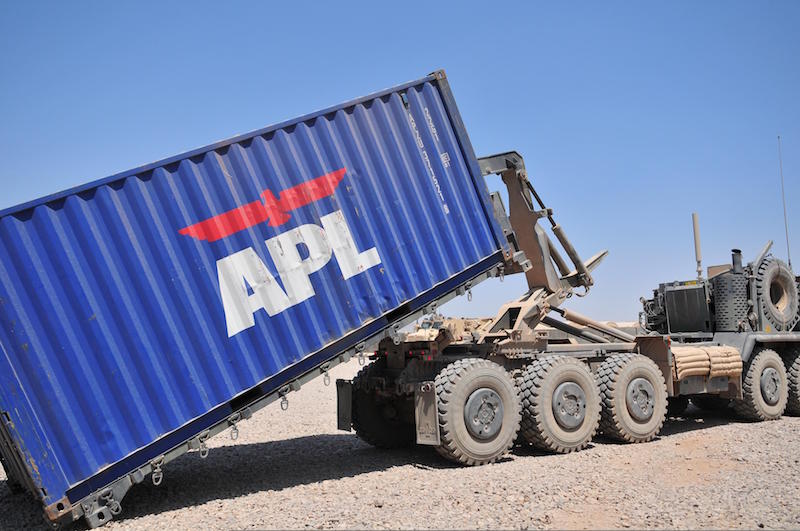
As we have learned from our previous posts, railroad, air cargo, and automobile shipping has shaped the entire transportation business into what it is today. The next step in the evolution of transport has affected the political and economic history of the United States- can you guess what that next step was? We’ll give you a hint: they have eighteen wheels, very loud engines, and barely get 6 miles/gallon for gas.
Yes. Semi-trucks. We may hate them at times for taking up the highway roads, but the world would not function the same way without them.
When did Trucking Begin?
The first trucks appeared in the early 19th century, but a lack of paved roads and solid rubber tires made the speed of transportation a lot slower. Air-filled tires did not come around until the 20th century, around the same time paved rural roads became more defined.
Trucks first started being frequently used during World War I by the military. Railroads were so crowded that semi-truck transportation was a faster means of transportation and kept the railroads from becoming even more congested.
President Roosevelt was an active member of revolutionizing the trucking industry, as he was affiliated with The American Highway Freight Association and the Federated Trucking Associations of America. He also constructed the code of competition which limits the driving hours for a truck or bus driver.
How has Trucking Evolved?
By the 1970’s, “truckers” had their own rapidly rising culture. The ladies wanted truckers more than motorcycle riders and cowboys. Trucker hats and plaid shirts became a style worn all over America by men and women that were not even in the trucking industry.
Truck driving in the 70’s was not an ideal profession for the time, however. Workers were not unionized, therefore pay was not very good. The number of carriers kept increasing, and the need for drivers became more demanding.
It wasn’t until the 1990’s that trucking became a booming industry. Competition was drastically increasing and business sales were at an all-time high. The Chauffer’s license was replaced with the CDL license around this time as well. Truck drivers had new laws and regulations that gave them proper training and higher pay. The increase in driver’s schools also increased the amount of trucks.
By the 2,000’s there were over 26 million trucks on the road in America alone. Huge department stores like Wal-mart and Target became a big hit once they were able to have daily truck deliveries. Also during this time, The Occupational Safety and Health Administration became more mindful of the accidents caused on the road by semi-truck blind spots. More educational programs were introduced to make drivers more aware of these issues.
How does the Trucking Industry Benefit us?
- Trucks transport very large quantities of raw material, works in progress, and finished goods across land from manufacturing plants to retail distribution centers. Anything you buy from any store was probably brought by truck.
- Some companies have delivery trucks that deliver to their business every day. As inventory remains stocked, prices stay lower, and our entire economy functions more to our advantage.
- Trucks make it easier to deliver and store perishable food, with their refrigerated truck beds.
- At least 85% of all agricultural products sold are shipped by truck.
- At least 65% of all pharmaceutical products sold are shipped by truck.
- About 95% of all lumber and other wood products sold are shipped by truck.
- Over 80% of all communities in the U.S. receive truck deliveries.
